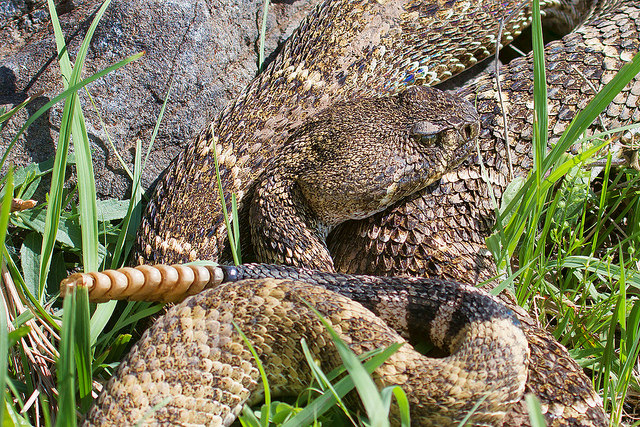Nature
Snakes are on the Move in the Texas Hill Country
Finally, the breeze hails from the north and summertime slips away as a sweet, sultry memory, giving way to the autumn colors bursting with vibrancy throughout the Texas Hill Country. How else do we know that summer is waving good-bye? Snakes are on the move, my friends, and a few unfortunate residents of the Hill Country have reportedly been bitten recently, two in particular around the Lake Buchanan area. As sure as the lower temperatures lure you outside, the Hill Country snake population is enjoying the cooler weather, too slithering about during daylight hours and gearing up for winter. Here’s what you need to know to avoid an ugly encounter:

Snakes are on the Move in the Texas Hill Country
Photo: Western Cottonmouth, Flickr/TomSpinker
Most people assume that the peak activity for snakes is springtime. Little by little, the longer days and warm sunshine seduce the slumbering serpents from their cozy nests awakening their hunger and desire to mate. But surprisingly, as summer morphs into autumn, snakes are also busy as bees.
According to an article published on the Houston Chronicle’s website, Chron.com, in 2013, “Texas sees two annual peaks in snake activity. One occurs in spring. The other is autumn — now.”
Truth is, you are more likely to come upon a snake in autumn than you are in the summertime. Snakes hide from the heat and sleep the long, hot summer days away coming out at night to hunt and eat. Should you encounter a snake in summertime, it’s probably because you accidentally happened upon its favorite napping spot. And let’s face it, no one wants to be rudely awakened from a nap.

Photo: Coral snake, Flickr/AshleyTubbs
Snakes prefer the cooler temperatures in autumn and so, just like us, they tend to be more active during the day than in the summertime. Plus, they have jobs to do to prepare for the winter ahead. Not only do they need to find a perfect winter hideaway, but they must eat enough to sustain them through the wintertime until the sunshine again draws them from their dens.

Photo: Western Diamondback, Flickr/LarrySmith
So what do you need to do to protect yourself from a run-in with writhing reptiles? Mostly, be aware and prepared. If you’re out traipsing about in snake country, wear closed-toed shoes (boots are best), long pants, and thick gloves if you are going to be digging around in brush. Protect your pooch by keeping them on a leash and on well-defined trails. If you take your dog hunting, consider signing up for a snake avoidance class with your pup, like the one offered here.
And of course, if you or your pet gets tagged by a snake, seek medical attention as soon as possible. While Texas only experiences on average one death by snakebite per year, the best way to avoid serious complications from a snakebite is to get yourself or your pet to the hospital quickly where IV antibiotics, pain medication, and antivenom can be administered.



